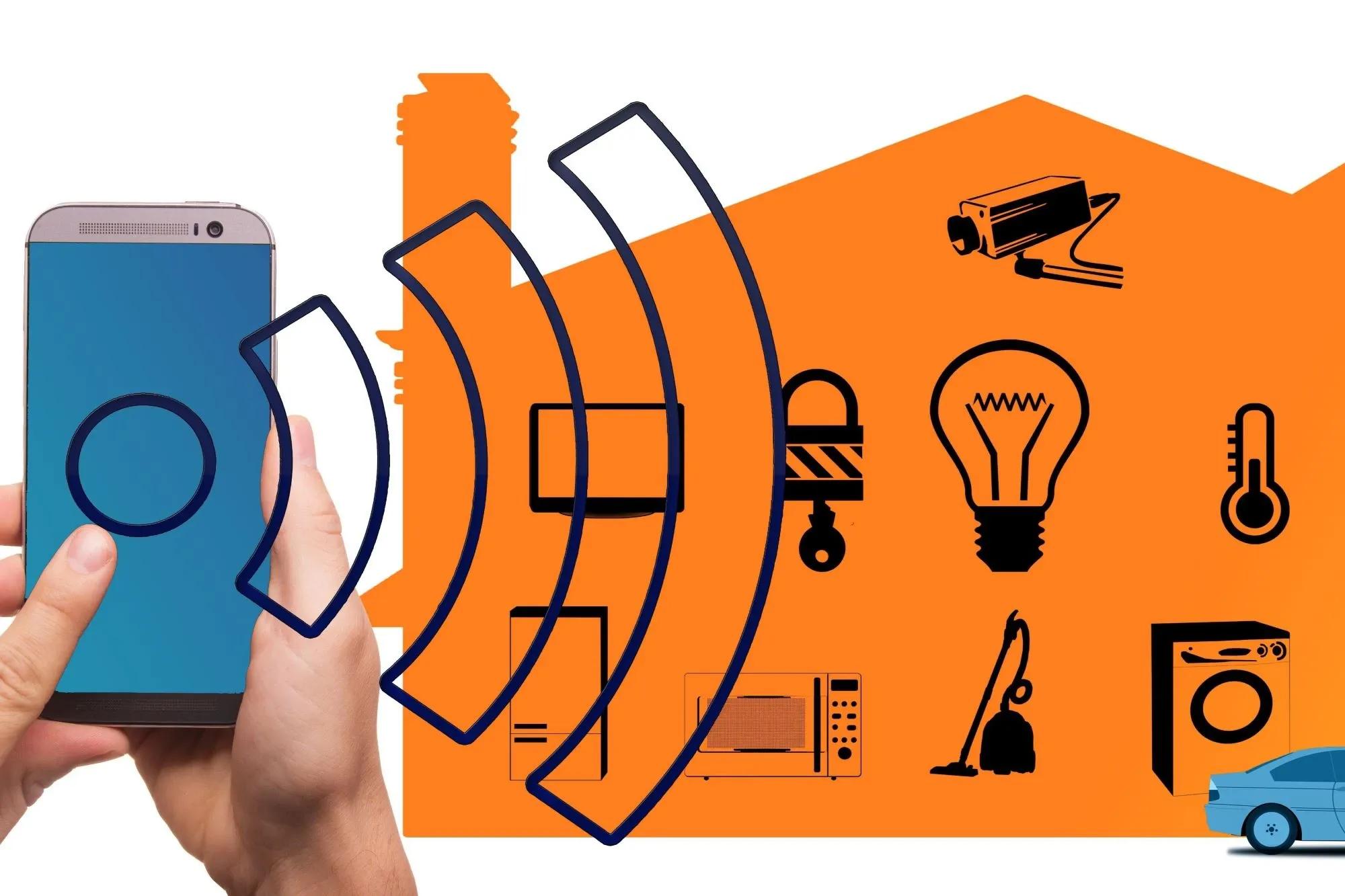How Technology Is Changing the Landscape of Home Security
In today’s world, ensuring the safety of our homes has never been more important. With the advancement of technology, home security systems have evolved from simple locks and alarms to highly sophisticated, integrated solutions. The question now isn’t if you should secure your home, but how you can leverage cutting-edge technology to do it better. So, how exactly is technology transforming home security, and what does it mean for homeowners like you?
The Evolution of Home Security Systems
For centuries, home security was primarily about creating physical barriers. People relied on sturdy locks, fences, and, in some cases, guard dogs to deter intruders. This approach was simple but effective in its time. The goal was to make unauthorized entry as difficult as possible, relying on the strength of physical defenses. The limitations of this method became evident as criminals grew more adept at bypassing these traditional barriers, prompting the development of more sophisticated solutions. In the early 20th century, the advent of electricity brought about the first wave of modern security innovations, such as doorbell alarms and rudimentary security systems, giving homeowners more control over their safety.
The real transformation came with the development of electric alarm systems in the mid-20th century. These systems included features like window and door sensors that would trigger an alarm if breached. This marked a significant milestone in home security, allowing homeowners to protect their homes without having to be physically present. Fast forward to the digital age, and we see a dramatic evolution in home security technology. Today, modern systems are interconnected, powered by advanced technologies like artificial intelligence, the Internet of Things (IoT), and real-time video surveillance. These innovations offer a higher level of protection, efficiency, and convenience, marking a new era of home security.
Smart Home Security Systems
Smart home security systems have quickly become a top choice for homeowners looking to protect their property in a more efficient and convenient way. These systems integrate with smartphones and other smart devices, allowing users to monitor and control their security setup from anywhere. The ability to receive real-time alerts and take immediate action, whether that means locking a door or checking a camera feed, has greatly improved how people interact with their home security. This remote accessibility is one of the primary reasons smart systems are becoming so popular.
Key features of Smart Home Security Systems include:
- Remote access and control via smartphones, tablets, or computers.
- Real-time notifications and alerts when motion is detected or a breach occurs.
- Video surveillance with HD quality for clear visual monitoring.
- Customizable settings, allowing users to arm or disarm systems, lock doors, and monitor sensors.
- Integration with other smart devices, such as smart lights or thermostats, creating a seamless smart home experience.
The Role of IoT (Internet of Things) in Home Security
The Internet of Things (IoT) is fundamentally transforming home security systems by connecting a variety of devices that can communicate with each other. IoT enables seamless interaction between smart cameras, door locks, motion sensors, and alarm systems, creating a more comprehensive and automated approach to home security. This interconnectedness means that when one device detects a potential issue, such as a door being opened unexpectedly, it can trigger other devices to respond accordingly. For example, a sensor detecting movement might activate the nearest camera, turn on the outdoor lights, and notify the homeowner through their smartphone, all in a matter of seconds.
Key benefits of IoT in Home Security:
- Automation of security tasks, such as arming systems or locking doors based on triggers.
- Enhanced real-time monitoring, where multiple devices work in unison to monitor activities.
- Data-sharing and communication between security devices to provide a more integrated approach.
- Smart responses, such as automatically turning on lights or sounding alarms when threats are detected.
- Constant system learning, which allows the security setup to adapt based on past behavior and trends.
Voice-Activated Assistants and Home Security
Voice-activated assistants like Amazon Alexa and Google Assistant are increasingly becoming integral parts of modern smart homes, and their application in home security is particularly exciting. These assistants allow users to control their security systems through simple voice commands, offering a new level of convenience. Whether you’re heading out for the day and want to arm your system, or you’re in bed and want to check if the front door is locked, you can now manage everything hands-free by simply asking your virtual assistant to do it for you.
Key functions of Voice-Activated Assistants in Home Security:
- Hands-free control of security systems through voice commands.
- Integration with other smart devices, allowing for simultaneous actions, such as locking doors and arming alarms.
- Customizable routines for specific commands (e.g., “Goodnight” activating multiple security features at once).
- Real-time status checks, allowing users to ask if doors are locked or cameras are active.
- Convenience in emergencies, where quick voice commands can trigger alarms or notify authorities without physical action.
Video Surveillance: Going Beyond Traditional CCTV
In the past, home security systems relied heavily on traditional CCTV (Closed-Circuit Television), which often produced grainy, low-resolution footage. While it was helpful for basic surveillance, the low quality of the video often made it difficult to identify intruders or capture detailed images. Modern advancements in video surveillance have completely changed this landscape. Today, home security cameras offer HD and even 4K resolution, providing crystal-clear images that make it much easier to monitor your home and detect any unusual activity. These high-definition systems give homeowners the ability to zoom in on specific details, such as facial features or license plate numbers, which would have been impossible with older CCTV systems.
Cloud Storage for Security Footage
One of the biggest advancements in video surveillance technology is the move from local storage to cloud storage. Traditionally, footage from security cameras was stored on physical hard drives, which posed a risk: if the hard drive was damaged, stolen, or destroyed, all of the video evidence would be lost. Cloud storage solves this problem by storing security footage securely online. This ensures that even if the camera equipment is tampered with, the footage remains safe and can be accessed anytime. Homeowners can now retrieve footage from any location, adding an extra layer of security and peace of mind.
However, with the convenience of cloud storage come valid concerns about privacy and data security. Since the footage is stored online, there is always the possibility of hacking or unauthorized access. It’s crucial for homeowners to choose a cloud storage provider that offers encryption and two-factor authentication to protect their data. Balancing the convenience of cloud storage with the need for data security is essential in today’s digital age, where cyber threats can be just as dangerous as physical ones.
| Features | Traditional CCTV | Modern Video Surveillance | Cloud Storage |
| Video Quality | Grainy, low-resolution | HD, 4K resolution | Dependent on camera capabilities |
| Storage Method | Local hard drive | Local or cloud storage | Online, accessible from anywhere |
| Access | Limited to physical location | Remote access via smartphone | Remote access, secure cloud environment |
| Risk of Data Loss | High if equipment is damaged | Low with cloud backup | Minimal, as footage is stored online |
Artificial Intelligence (AI) and Home Security
Artificial Intelligence (AI) is revolutionizing home security by making systems smarter and more efficient. AI-powered systems use advanced algorithms to analyze data from sensors, cameras, and other devices to detect potential threats in real time. One of the most significant innovations is facial recognition technology, which allows security systems to distinguish between familiar faces, like family members or frequent visitors, and potential intruders. This can reduce the number of false alarms, which are common in traditional systems that cannot differentiate between people or objects effectively. By accurately identifying who is entering or approaching the home, AI enhances both security and convenience.
AI-Powered Intrusion Detection Systems
AI-powered intrusion detection systems take home security a step further by using predictive analysis to identify threats before they occur. These systems don’t just rely on motion sensors or basic alarms; they use AI algorithms to evaluate patterns of behavior that may indicate a potential break-in. For example, if someone is lingering outside your home for an unusual amount of time, the system might recognize this as suspicious behavior and alert you before any actual breach occurs. This predictive capability is a game-changer in home security, as it enables you to act before a crime is committed.
Another benefit of AI-powered systems is their ability to reduce false alarms, which can be a major inconvenience for homeowners. Traditional security systems might send an alert every time a pet walks through the yard or a tree branch moves in the wind, but AI systems are designed to differentiate between harmless activity and real threats. This means fewer unnecessary alerts, allowing you to focus on actual security issues. As AI technology continues to evolve, we can expect home security systems to become even more precise, effective, and user-friendly.







